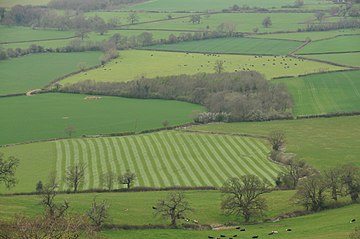In this article, Smita Singh discusses the concept of kharab land in Karnataka.
Kharab is a land which is common for anyone transacting in the land in Karnataka to come across. This article will clarify the concept of “kharab” to enable those transacting in land to deal appropriately.
Classification of land
The term “Kharab” indicates a classification/type of land. As per Rule 21(2) of the Karnataka Land Revenue Rules, 1966 during the process of classification, land included as arable (i.e. unfit for cultivation) is to be treated as “Pot Kharab”. Pot Kharab lands, in turn, have following two categories:
- ‘A’ kharab
- ‘B’ kharab
‘A’ kharab
‘A’ kharab is classified as unfit for agriculture at the time of survey including the farm buildings or threshing floor of the holder.
The ‘A’ kharab area may form part of the land held under private ownership. It comprises the portion that is not used for cultivation, but for purposes like:
- Farm buildings, or
- Threshing floor etc.
Therefore sometimes, it could be exempted from the land revenue assessment. ‘A’ kharab area can be brought under cultivation. It is capable of conveyance or conversion to non-agricultural use.
It is pertinent to mention that Kharab ‘A’ land is capable of ownership and cannot be claimed to be adjunct to cultivable land. Kharab ‘A’ land does not get automatically transferred along with adjoining agricultural/cultivable area. Merely because a land is classified as ‘A’ kharab, it cannot be assumed that it is under private ownership.
Significantly, section 67(1) of the Karnataka Land Revenue Act, 1964 declares that all lands which are not the property of any person are the property of the state government. It provides:
- All public roads, streets, lanes, paths, bridges, ditches, dikes, fences
- The bed of:
- The sea, harbors, creeks below high water mark and of rivers,
- Streams, nalas, lakes
- Tanks, and all canals and watercourses
- All standing and flowing waters, and
- All lands wherever situated which are not the property of individuals or of aggregate of persons legally capable of holding property, and except insofar as any rights of such persons may be established, in or over the same, and except as may be otherwise provided in any law for the time being in force, are and are hereby declared to be with all rights in or over the same or appertaining thereto, the property of the State government.
‘B’ kharab
‘B’ kharab is not assessed because:
- It is reserved or assigned for the public purpose
- It is occupied by a road or recognized footpath or by a tank or stream used by persons other than the holders for:
- Irrigation
- Drinking, or
- Domestic Purposes
- Used as a burial ground or cremation ground
- Assigned to village potteries
The kharab land which is categorized as ‘B’ kharab belongs to the government and the same can neither be converted nor conveyed by private parties.
Saudagar Rasul Khan v. State of Mysore ILR 1973 Mys 56
One of the earliest decisions of Karnataka High Court on the above-mentioned case while considering a private individual’s claim of ownership over kharab land, the court held that:
Because the Revenue Rules permit the owner of the adjacent cultivable land to bring the kaharb land belonging to the government under cultivation, one should presume that when the cultivable land is sold, some sort of the title in respect of the adjacent kharab land is also conveyed. It is difficult to accept this proposition. Kharab land is so called because it is not cultivable and is a classification made for purposes of revenue exemption. Kharab land is also capable of ownership, and cannot be regarded as an adjunct to the cultivable land which gets transferred along with the cultivable land. Acquisition of the title to the Kharab land is similar to the acquisition of the title to the cultivable land.
Later decisions hold that a private party can claim compensation in respect of kharab land that gets acquired by the state in the exercise of the power of eminent domain by establishing ownership and that the same was not kharab ‘B’/government kharab[1].
Private ownership over kharab land
Private ownership over kharab land can thus be claimed only if it is established that:
- The kharab extent belongs to private party i.e. he acquired the title validly, and
- The kharab portion is not ‘B’ kharab.
Source of acquisition
To ascertain the title to kharab extent is validly acquired, the source of acquisition for instance:
- Issued by state authorities,
- Sale deed,
- Gift deed etc. will have to be examined.
Dealing with a private individual ownership claim over land described as “kharab” and occupied by the tank.
R. Hanumaiah v. State of Karnataka, (2010) 5 SCC 203
The Supreme Court in the above case specified the nature of proof required for declaration of the title against the government as follows:
- Suits for a declaration of the title against the government, though similar to suits for a declaration of the title against private individuals differ significantly in some aspects.
- The first difference is in regard to the presumption available in favor of the government.
- All lands which are not the property of any person or which are not vested in a local authority, belong to the government.
- All unoccupied lands are the property of the government unless any person can establish his right or title to any such land. This presumption available to the government, is not available to any person or individual.
- The second difference is in regard to the period for which title and/or possession has to be established by a person suing for a declaration of the title.
- Establishing title/possession for a period exceeding twelve years may be adequate to establish title in a declaratory suit against any individual.
- On the other hand, title/possession for a period exceeding thirty years will have to be established to succeed in a declaratory suit for a title against the government.
- This follows from Article 112 of the Limitation Act, 1963, which prescribes a longer period of thirty years as the limitation in regard to suits by the government as against the period of 12 years for suits by private individuals.
Government properties are spread over the entire State and it is not always possible for the government to protect or safeguard its properties from encroachments. Many a time, its own officers who are expected to protect its properties and maintain proper records, either due to negligence or collusion, create entries in records to help private parties, to lay claim of ownership or possession against the government.
Loss of government property is ultimately the loss to the community. Courts owe a duty to be vigilant to ensure that public property is not converted into private property by unscrupulous elements.
Whether the government contests the suit or not, before a suit for declaration of the title against a government is decreed, the plaintiff should establish
- Either his title by producing the title deeds which satisfactorily trace title for a minimum period of thirty years prior to the date of the suit (except where the title is claimed with reference to a grant or transfer by the government or a statutory development authority), or
- By establishing adverse possession for a period of more than thirty years. In such suits the court cannot ignore the presumptions available in favor of the government grant declaratory decrees against the government by relying upon one of the principles underlying pleadings that plaint averments which are not denied or traversed are deemed to have been accepted or admitted.
Unexplained stray or sporadic entries for a year or for a few years will not be sufficient and should be ignored. As noticed above, many a time it is possible for a private citizen to get his name entered as the occupant of government land, with the help of collusive government servants. Only entries based on appropriate documents like grants, title deeds, etc. based upon actual verification of physical possession by an authority authorized to recognize such possession and make appropriate entries can be used against the government.
Thus, in absence of acquisition title to kharab land, a private party will not be allowed to claim title over the same, particularly against the government.
To rule out that kharab portion is not ‘B’, kharab the revenue records viz.
- Akarband
- Tippani
- Kharab uttar extract
- Village map, and
- RTCs must be examined.
Keeping the aforesaid aspects in mind, any transaction for acquiring kharab land should be proceed only if it comprises ‘A’ kharab and title to the same is validly acquired.
Sadashivaiah v. State of Karnataka, ILR 2003 KAR 508 and Dundappa Yankappa Halli vs The State of Karnataka arising out of Writ Petition Nos. 82178 92/2013 (LA-RES) decided on January 9, 2014[1]
 Serato DJ Crack 2025Serato DJ PRO Crack
Serato DJ Crack 2025Serato DJ PRO Crack










 Allow notifications
Allow notifications




Thank you for your valuable article. I have a doubt that whether Kharab land transfer with cultivation land from one person to another person or not
very useful article
Nice Article . Thank you! Can you please tell me if there something known as ‘C’ Kharab
Very good article. I have a question. I have agricultural land which I have applied for conversion (alienation) the title has some A karab with it. What will happen to it ? Will I be able to claim that too ? if so how will that happen ?.